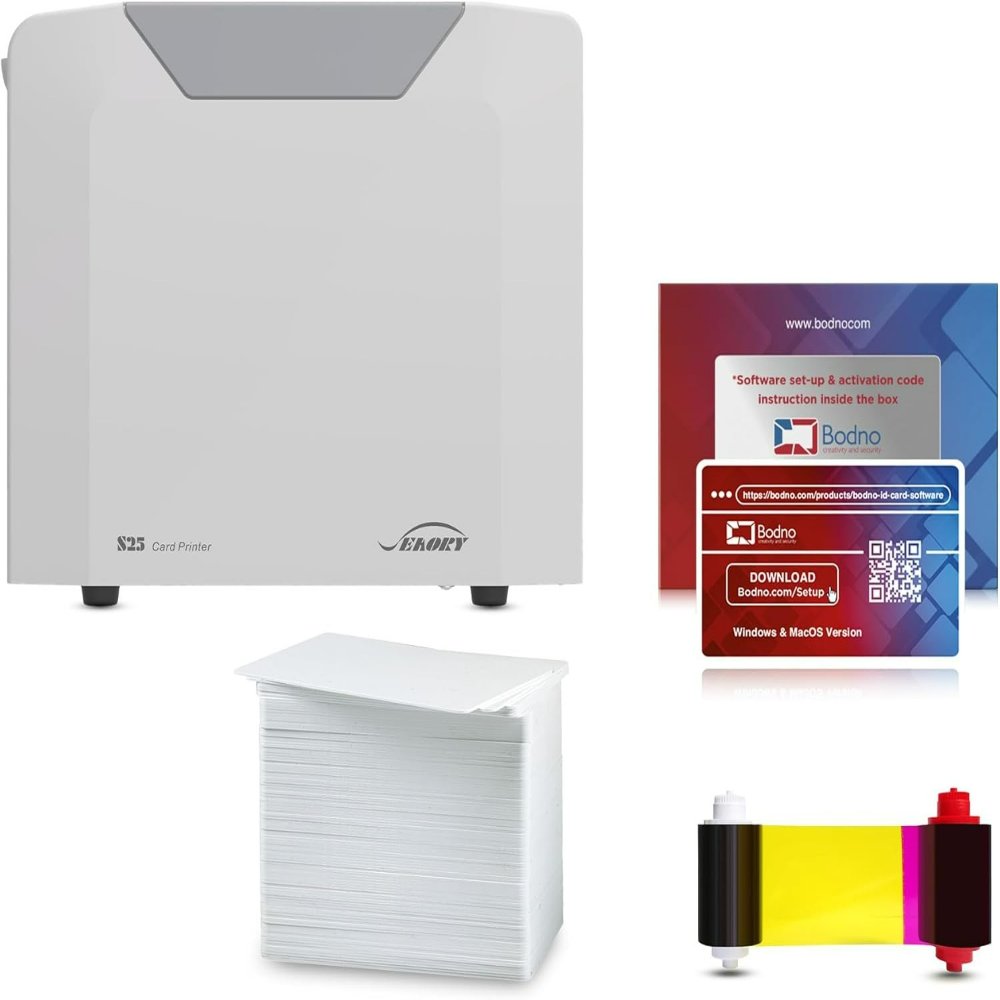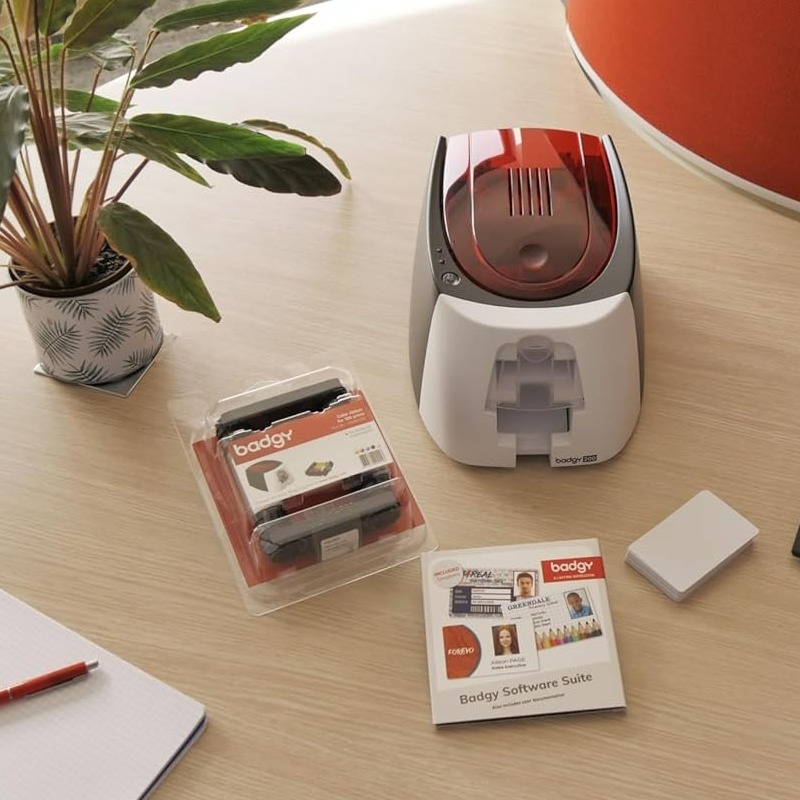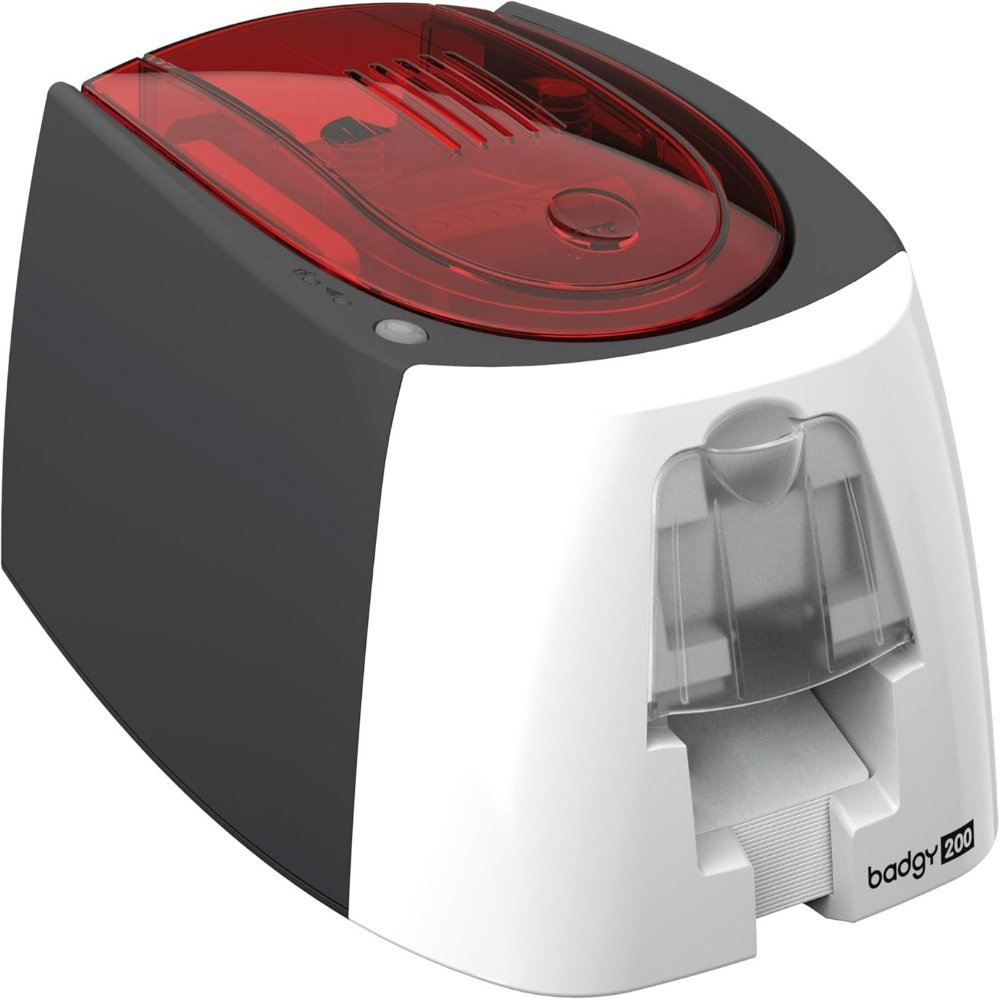Key Features to Consider When Selecting an ID Card Printer
Selecting the right ID card printer involves considering several key features. Think about your specific needs. Do you need high-quality graphics, swift printing, or specific card materials? Keep these in mind to find the perfect match for your organization’s requirements.
Print Quality and Resolution
High print quality and resolution are crucial for ID card printers. They ensure your cards look professional and are easy to read. Look for printers that offer high DPI (dots per inch). Aim for a minimum of 300 DPI for crisp text and sharp images. Higher resolutions are available for even better clarity.
Printing Speed Capabilities
Consider how fast you need to print cards. Printing speed matters when you’re producing large volumes. Fast output can significantly improve efficiency. Printers rate their speed by cards per hour (CPH). Compare these ratings to your expected workload. This will help avoid bottlenecks during high-demand periods.
Card Material Compatibility
ID cards can be made from PVC, PET, or composite materials. Each has different qualities and costs. Think about where and how the cards will be used. You might need more durable cards for outdoor use. Make sure the ID card printer supports your chosen card material. Compatibility is key to avoid printer damage and poor quality prints.

Types of ID Card Printers
Exploring different types of ID card printers is key in the selection process. There are three main types to consider.
Direct-to-Card Printers
Direct-to-Card printers, or DTC printers, are common and cost-effective. They print images directly onto the card surface. This type is ideal for basic ID card printing with standard resolutions. They suit businesses that need ID cards without advanced security features.
Retransfer Printers
Retransfer printers offer higher print quality. Instead of printing directly onto the card, they transfer images to a clear film that fuses with the card. This method provides vivid graphics and better protection against wear. Retransfer printers are perfect for organizations that require high-quality visuals and durability.
Laser Engravers
Laser engravers are the pinnacle of ID card printer security. They etch data into the cards, making forgery and tampering extremely difficult. These are top-of-the-line options used by government agencies and high-security facilities. If security is a top priority, investing in a laser engraver might be the right choice.
When considering an id card printer, assess your organization’s needs closely. Think about print quality, card durability, and security requirements. Each printer type meets different needs, and the right choice depends on your specific demands.
Understanding Printer Connectivity Options
When selecting an id card printer, connectivity is an aspect that warrants attention. It defines how the printer will communicate with other devices. Let’s explore the common connectivity options available.
USB Interface
The USB interface is the most straightforward and commonly used connection type. Almost every id card printer comes with a USB port, allowing for easy plug-and-play setup. It’s suitable for single-user environments. This option provides a direct link between the printer and a computer. It’s quick to install and doesn’t require complex configurations.
Ethernet Networking
For larger organizations, Ethernet networking is crucial. It connects the id card printer to a local area network (LAN). This permits multiple users to access the printer from different computers. Ethernet networking helps in managing printer tasks effectively in a busy office setting. It supports high-volume printing scenarios by providing steady and faster data transfer rates.
Wireless Connectivity
Lastly, wireless connectivity adds flexibility and convenience to printer usage. An id card printer with wireless capabilities can connect to various devices without the clutter of cables. It’s ideal for environments that prefer a clean setup. Wireless technology allows printing from laptops, tablets, or smartphones. It offers the luxury to move the printer to different locations within network range easily.

Security Features and Encoding Options
Enhancing security is a major concern when choosing an ID card printer. Review these features to boost card safety. The right encoding options can also streamline your ID card processing.
Holographic Overlays
Holographic overlays are a top security feature for ID cards. They add a visible security layer that’s hard to copy. This deters counterfeiting and tampering. They work well with retransfer printers. These printers allow the overlay to bond seamlessly with the card.
Smart Card Encoding
Smart card encoding involves embedding chips into ID cards. These chips hold data that machines can read. This option is great for access control. It also boosts card functionality. It is vital for sectors where information security is crucial.
Magnetic Stripe Encoding
Magnetic stripe encoding allows storage of information on a card’s magnetic strip. This is common in banking and access cards. It offers a simple swipe-and-read function. It’s a cost-effective way to encode data on ID cards. Choose a printer that supports magnetic stripe encoding if this suits your needs.
Ease of Use and Maintenance
Selecting an id card printer that is easy to use and maintain can save time and resources. Seek out printers that offer intuitive interfaces and straightforward operation processes. These simplify the training phase for staff members and allow them to operate the machine efficiently without extensive technical knowledge.
User-Friendly Software
User-friendly software in an id card printer is a must. It allows users to design and print ID cards without hassle. Choose printers with software that features a clean layout and easy-to-understand instructions. Software that can store templates and profiles is a plus. It can speed up the printing process by allowing quick access to frequently used designs.
Printer Cleaning and Maintenance
Regular cleaning and maintenance ensure the longevity of the printer. Clean printers produce better quality prints and run smoothly. Look for id card printers that come with cleaning kits and clear maintenance instructions. Some models include automatic cleaning features. Consider printers that alert the user when maintenance is due. This feature helps to prevent potential problems due to neglect. Maintenance should require minimal technical knowledge so that anyone can perform necessary tasks.

Cost Considerations and Budgeting
When investing in an id card printer, cost is a major factor to consider. Budgeting the right amount ensures you get the value you need without overspending. Look at the overall expenses, not just the initial price. Let’s break down the cost aspects.
Initial Purchase Price
The purchase price of an id card printer varies. It depends on the printing technology and features. Basic models are generally affordable. High-end printers, like laser engravers with advanced security options, cost more. Choose a printer that fits both your needs and budget.
Consumable Costs
Running an id card printer involves ongoing expenses for consumables. These include ink or ribbons, cleaning kits, and blank cards. Retransfer printers and those with higher resolutions may use pricier supplies. Factor these costs into your budget to avoid surprises later on.
Long-term Operation Costs
Think about long-term expenses too. These include maintenance, repairs, and replacement parts. Printers with sophisticated features may require costly repairs. Consider printers known for their durability and low maintenance needs. Check for energy-efficient models to save on electricity over time. These insights help you calculate the true cost of ownership.
Support and Warranty Services
When investing in an id card printer, support and warranty services are significant aspects to consider. They provide peace of mind and safeguard your investment.
Manufacturer’s Warranty
A manufacturer’s warranty acts as a promise of quality. It covers defects and malfunctions for a specified period. When choosing an id card printer, compare warranties. Look for warranties that span several years. Extended warranties offer additional protection and can be worth the extra cost.
Technical Support Availability
After-sales service is crucial for addressing operational difficulties. Ensure that the printer manufacturer offers reliable technical support. This support should be easily accessible through phone, email, or live chat. Check whether the support is available during your working hours. Some providers may also offer on-site support for complex issues. Consider these options to maintain seamless operation of your id card printing processes.
Reviews and Recommendations
Gathering feedback and opinions can greatly influence the decision-making process. Reviews and recommendations provide insights into real user experiences and industry recognition.
Customer Reviews
Checking customer reviews is a useful step when selecting an ID card printer. Reviews often highlight a printer’s performance and reliability. They can alert you to common issues or reveal how well a printer meets user expectations. Look for reviews on multiple platforms for a balanced view. Pay attention to comments on print quality, ease of use, and customer service.
Industry Awards and Accreditations
Awards and accreditations from industry bodies can signal a printer’s quality and reliability. They often reflect innovation, excellence, and compliance with industry standards. Look for ID card printers that have received awards or certifications from recognized organizations. These endorsements can help reassure your choice is well-regarded in the market. Consider this recognition as a testament to a printer’s credibility and performance.